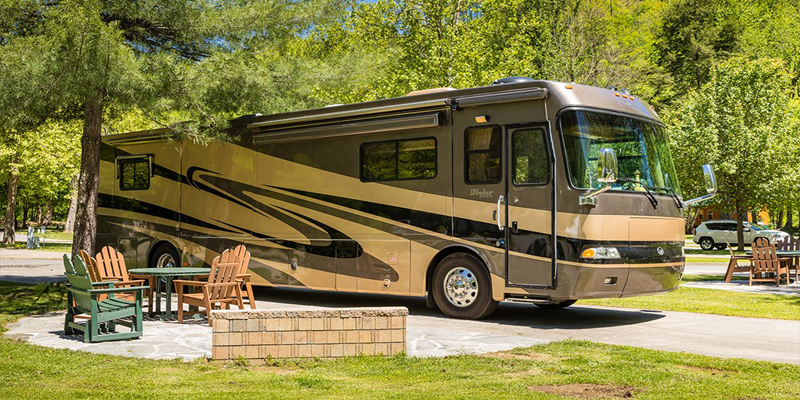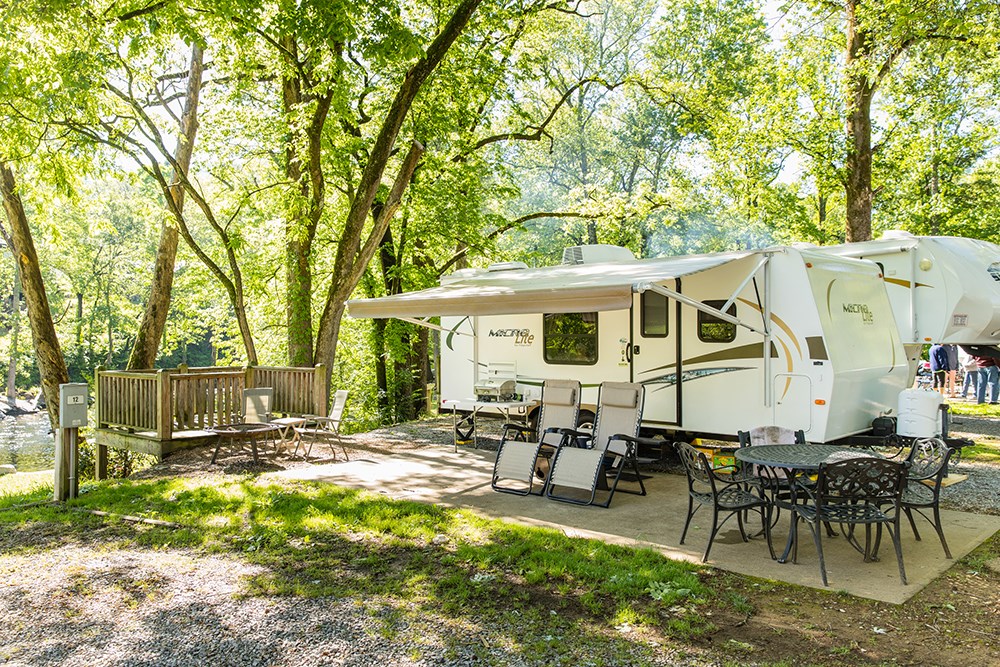What You Need to Know About Your RV Batteries
PROPERLY MAINTAIN AND EXTEND THE LIFE OF YOUR RV BATTERIES BY UNDERSTANDING THE BASICS OF YOUR RV BATTERIES AND HOW THEY WORK.
To properly maintain and extend the life of your RV batteries you need to have a basic understanding of what a battery is and how it works. Batteries used in RVs are lead acid batteries, which means they have several cells connected in series. Each cell produces approximately 2.1 volts, so a 12-volt battery with six cells in series produces an out put voltage of 12.6 volts. Lead acid batteries are made of plates, lead and lead oxide submersed in electrolyte that is 36 percent sulfuric acid and 64 percent water. Lead acid batteries don’t make electricity they store electricity. The size of the lead plates and the amount of electrolyte determines the amount of charge a battery can store.
Now it’s very important that you use the right battery for the type of application. The battery used to start and run the engine is referred to as a chassis battery or a starting battery. Vehicle starters require large starting currents for short periods. Starting batteries have a large number of thin plates to maximize the plate area exposed to the electrolyte. This is what provides the large amount of current in short bursts. Starting batteries are rated in Cold Cranking Amps (CCA). CCA is the number of amps the battery can deliver at 0 degrees F for 30 seconds and not drop below 7.2 volts. Starting batteries should not be used for deep cycle applications.
The battery or batteries used to supply 12-volts to the RV itself are commonly referred to as house batteries. House batteries need to be deep cycle batteries that are designed to provide a steady amount of current over a long period. Starting batteries and marine batteries should not be used in this application. True deep cycle batteries have much thicker plates and are designed to be deeply discharged and recharged repeatedly. These batteries are rated in Amp Hours (AH) and more recently Reserve Capacity (RC).
The amp hour rating is basically, how many amps the battery can deliver for how many hours before the battery is discharged. Amps times hours. In other words a battery that can deliver 5 amps for 20 hours before it is discharged would have a 100 amp hour rating 5 Amps X 20 Hours = 100Amp Hours. This same battery can deliver 20 amps for 5 hours 20 Amps X 5 Hours = 100 Amp Hours. Reserve Capacity rating (RC) is the number of minutes at 80 degrees F that the battery can deliver 25 amps until it drops below 10.5 volts. To figure the amp hour rating you can multiply the RC rating by 60 percent. RC X 60 percent.
The two major construction types of deep cycle batteries are flooded lead acid and Valve Regulated Lead Acid. Flooded lead acid batteries are the most common type and come in two styles. Serviceable with removable caps so you can inspect and perform maintenance or the maintenance free type. In VRLA batteries, the electrolyte is suspended in either a gel or a fiberglass-mat. Gel cell batteries use battery acid in the form of a gel. They are leak proof and because of this, they work well for marine applications.
There are several disadvantages to gel cell batteries for RV applications. Most importantly, they must be charged at a slower rate and a lower voltage than flooded cell batteries. Any overcharging can cause permanent damage to the cells. Absorbed Glass Mat, or AGM Technology, uses a fibrous mat between the plates, which is 90 percent soaked in electrolyte. They are more expensive than a standard deep cycle battery but they have some advantages. They can be charged the same as a standard lead acid battery, they don’t loose any water, they can’t leak, they are virtually maintenance free and they are almost impossible to freeze.
The life expectancy of your RV batteries depends on you. How they’re used, how well they’re maintained, how they’re discharged, how they’re re-charged, and how they are stored, all contribute to a batteries life span. A battery cycle is one complete discharge from 100 percent down to about 50 percent and then re-charged back to 100 percent. One important factor to battery life is how deep the battery is cycled each time. If the battery is discharged to 50 percent everyday, it will last twice as long as it would if it is cycled to 80 percent. Keep this in mind when you consider a battery’s amp hour rating. The amp hour rating is really cut in half because you don’t want to completely discharge the battery before recharging it. The life expectancy of a battery depends on how soon a discharged battery is recharged. The sooner it is recharged the better.
What does all of this mean to you? That depends on how you use your RV. If most of your camping is done where you are plugged into an electrical source then your main concern is just to properly maintain your deep cycle batteries. But if you really like to get away from it all and you do some serious dry camping you’ll want the highest amp hour capacities you can fit on your RV.
Deep cycle batteries come in all different sizes. Some are designated by Group size, like group 24, 27 and 31. Basically, the larger the battery the more amp hours you get. Depending on your needs and the amount of space you have available, there are several options when it comes to batteries.
You can use one 12-volt 24 group deep cycle battery that provides 70 to 85 AH.
You can use two 12-volt 24 group batteries wired in parallel that provides 140 to 170 AH. Parallel wiring increases amp hours but not voltage.
If you have the room, you can do what a lot of RVers do and switch from the standard 12-volt batteries to two of the larger 6-volt golf cart batteries. These pairs of 6-volt batteries need to be wired in series to produce the required 12-volts and they will provide 180 to 220 AH. Series wiring increases voltage but not amp hours.
If this still doesn’t satisfy your requirements you can build larger battery banks using four 6-volt batteries wired in series / parallel that will give you 12-volts and double your AH capacity.






